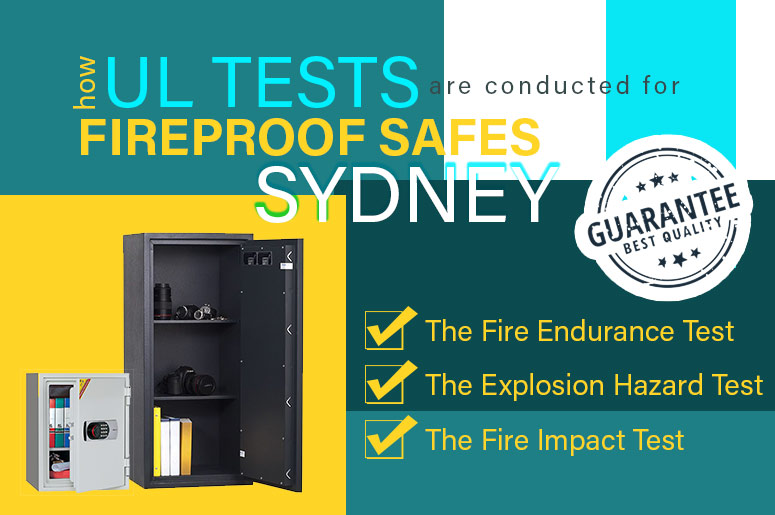A Quick Overview of U.L. Fire Ratings for Safes Sydney
Buying high-quality fireproof safes for home is a worthy investment that can offer decades of security for your valuables. Before purchasing a safe, however, it’s important to understand the fire ratings for safes Sydney.
Most safes with fire ratings come with an Underwriters Laboratories (UL) labelling. UL typically uses three types of materials in their tests: paper, microfilm, and computer media.
Each material has a different tolerance to temperature, humidity, as well as length of time exposed to harmful elements such as fires. The UL tests cover three different fire temperatures and five durations to examine how these three types of material behave in the interior of the safe.
So, what you see on the label is basically the maximum temperature allowed during the test.
How UL Tests are Conducted for Fireproof Safes Sydney
Depending on the time classification being tested, the fireproof safes for homes are allowed to heat up until a specified temperature, usually inside a furnace.
Once the target time and temperature are reached, it’s allowed to cool down. The safe is then opened so the testers can examine the contents to see if they’re in usable condition.
The components of the interior walls of the safe are also checked for humidity and heat damage. Below is a more detailed explanation of the tests usually conducted on fireproof safes.
The Fire Endurance Test
Fireproof safes Sydney are placed with tested materials and heat sensors, locked, then exposed to evenly distributed fire, usually to reach a maximum temperature of 1700 °F for one hour or 1850 °F for two hours.
The temperature of the interior is closely monitored and must never exceed 350 °F throughout the test.
The Explosion Hazard Test
Fireproof safes for home are locked and left inside a furnace that’s preheated to 2000 °F, which is maintained for 30 or 45 minutes depending on the category of the test.
The unit is then allowed to cool without opening the surface. If there is no resulting explosion, the safe is opened and the contents are examined for usability.
Other parts are also checked, such as the safe’s fastenings and locking mechanisms to make sure they’re still in usable condition.
The Fire Impact Test (Optional to the Manufacturer)
After the explosion hazard test, the safe is taken out of the furnace within two minutes of reaching the target temperature and duration. It is then dropped from 30 feet to a concrete floor with a riprap of bricks.
After impact, the safe is examined for any deformation, damaged insulation, or openings into the interior of the safe.
The unit is then usually left to cool down before being inverted and reheated to 1550 °F for 30 minutes or 1638 °F for 45 minutes depending on the test.
The safe is again left to cool down and the interior, locking mechanisms, and fastenings are inspected for any evidence of damage.
Additional information
While safes with fire ratings are usually put through rigorous tests, it’s important to know that the fireproof safes for homes may end up with little resistance against theft after a big fire.
There are, however, high-quality safes Sydney that offer very good protection against both fires and theft. You can find all that and more here at Buy A Safe. So, what are you waiting for? Take a look at our selection and get your next theft-resistant and fireproof safe here at Buy A Safe.

